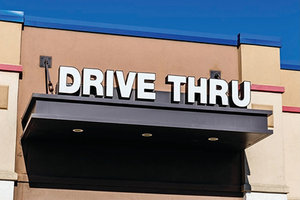During a practice management seminar years ago, a chiropractic colleague shared that he had adjusted a potential patient for the first time while near the condiment bar in a fast-food restaurant. Aside from missing a contraindication to cervical manipulation, our profession continues to have a bit of an image problem, and it certainly looks lousy for any of us to be managing someone's neck injury after ordering a burger, fries and a drink.
While speed of healing is a priority, so too is the accuracy of patient diagnosis. This requires a certain degree of thoroughness before prescribing, let alone administering spinal manipulation or some other protocol. Yet the notion of balancing speed with a comprehensive assessment seems to be lost on some of those in all areas of health care.
Are You Giving Patients What They Deserve? What Not to Do
 A 21-year-old soccer player presented to a chiropractor with significant radiocarpal pain two days after falling on his hyperextended wrist. Based on this extremely limited information, you likely already have an initial differential diagnosis formulating in your head, just from this one small slice of his history. Apparently, the attending DC did not.
A 21-year-old soccer player presented to a chiropractor with significant radiocarpal pain two days after falling on his hyperextended wrist. Based on this extremely limited information, you likely already have an initial differential diagnosis formulating in your head, just from this one small slice of his history. Apparently, the attending DC did not.
This chiropractor shot full-spine X-rays on the patient and focused exclusively on cervical subluxations. Now ask yourself: What would you have done? Perhaps more specifically, do you think you would have at least examined the patient's wrist?
A comprehensive diagnostic exam would likely include palpation around the injured wrist, in addition to administering tests designed to assess the patient's ranges of motion, both active and passive. Muscle testing would also be conducted, including separate testing of each muscle-tendon unit crossing the wrist.
If this exam had been completely thorough, it might even have included using a tuning fork to identify potential fracture or performing orthopedic tests to rule out a lunate fracture, Kienböck's disease or avascular necrosis of the lunate.
A variety of other diagnostic options could have been used to help identify the type, location and extent of the patient's injury, such as:
- Finkelstein's test for Quervain's tendosynovitis
- Watson's test for scaphoid pathology
- Allen's test for vasculopathy
- Grind test for osteoarthritis
- Tinel test for nerve issues
- Phalen test for carpal tunnel syndrome
McMurray's test is yet another option, which may cause a painful click during wrist motions. This test can help identify tenderness clearly localized to the dorsal anatomic depression, which is immediately distal to the ulnar head, thus adding triangular fibrocartilage complex damage to your differential diagnosis.
At a minimum, a comprehensive assessment should have included an examination of the patient's entire upper extremity, including the cervical spine. In this particular case, none of these additional tests was conducted, and the patient suffered as a result.
Defining "Standard of Care"
When you hear the phrase standard of care, what does this mean to you? While speed is important to running an efficient chiropractic practice, so is accuracy. Taking a thorough history, and performing a complete and meticulous physical examination, is necessary to developing a reputable standard of patient care. And it is an art that will result in a clearer diagnosis.
Unfortunately, in today's era of health care, the physical exam has become a quick, half-assed approach, followed by the practitioner relying solely on the results of an X-ray or MRI to determine a treatment plan. This puts the patient's health at risk while also exposing the practitioner to a potential lawsuit that, if a little time had been taken, could have been avoided completely. Yes, even some chiropractors are guilty of this.
Don't Become a Drive-Through Chiropractic Office
While speed is rewarded by businesses that serve their patrons fast food or service providers in the home repair space, in a chiropractic setting, this swiftness needs to be balanced with an assessment and exam that aims to get to the heart of the patient's issue, thereby providing better guidance when creating an effective treatment plan.
Imagine for a moment what a drive-through chiropractic office would look like. A patient could just drive up and the spinal or extremity adjustment would be performed without them ever having to leave their car. Would it be fast? Absolutely. Would it be efficient? Not at all. And our patients deserve more than that.
Click here for more information about Spencer Baron, DC, DACBSP.





